WP User Frontend
If you’ve ever dreamed of turning your WordPress site into a dynamic hub where users can actively contribute and interact, then you’re in for a treat. Today, we’re diving into the wonders of WP User Frontend, a plugin that can transform your site into a lively community-driven platform. Trust me, by the end of this article, you’ll see how WP User Frontend can bring your site to life in ways you never imagined. Let’s get started!
Why WP User Frontend is a Game-Changer
Imagine this: you’ve built a fantastic WordPress site, filled with insightful content and dazzling visuals. But something feels missing. You want your visitors to not just passively consume content but also engage with it. You crave that sense of community, where users can share their own experiences, post content, and interact with each other. That’s where WP User Frontend comes in.
This plugin allows users to submit content from the frontend of your site. Yes, you heard that right! Your visitors can create posts, edit their profiles, and manage their submissions without ever needing to peek behind the admin curtain. It’s like giving them the keys to a part of your kingdom, making them feel more involved and invested in your site.
Setting Up WP User Frontend: A Walkthrough
Getting started with WP User Frontend is a breeze, even if you’re not a tech wizard. Let’s break it down:
- Installation and Activation: Head over to your WordPress dashboard, navigate to Plugins > Add New, and search for “WP User Frontend.” Click “Install Now,” and once installed, hit “Activate.” Easy peasy!
- Creating a Registration Form: This is where the magic begins. You can create custom registration forms tailored to your site’s needs. Whether you want users to submit blog posts, product reviews, or even photos, you can design a form that fits perfectly.
- Configuring Form Settings: WP User Frontend offers a plethora of options to configure your forms. From setting up custom fields to choosing post submission statuses (draft, pending review, publish), you have full control.
- Shortcode Integration: WP User Frontend uses shortcodes to integrate forms into your site. Just copy the shortcode of your form and paste it into any page or post. Voilà! Your form is live.
Unleashing the Potential: Key Features of WP User Frontend
WP User Frontend isn’t just about letting users post content. It’s packed with features that enhance user experience and make your site more interactive. Here are some highlights:
Custom Post Types
One of the standout features is the ability to support custom post types. This means you’re not limited to traditional blog posts. Want users to submit products, events, or portfolios? No problem! WP User Frontend can handle it all.
Profile Management
Remember those outdated user profiles that come with WordPress? WP User Frontend breathes new life into them. Users can edit their profiles from the frontend, upload avatars, and update their information effortlessly. It’s all about making the experience as seamless as possible.
Subscription and Payment Options
Here’s where things get interesting. WP User Frontend supports subscription packages, allowing you to monetize your site. You can create different membership tiers, restrict content based on subscriptions, and even integrate payment gateways like PayPal. It’s a fantastic way to turn your site into a revenue-generating machine.
Content Moderation
Worried about spam or inappropriate content? Fear not. WP User Frontend gives you robust moderation tools. You can set up post-approval workflows, allowing admins to review and approve submissions before they go live. It’s all about maintaining quality and keeping your site safe.
Personal Touch: How WP User Frontend Changed My Site
Let me take you on a little journey of my own. When I first started my blog, it was just me, writing away and hoping people would read my posts. It was nice, but it felt… lonely. I wanted more interaction, more engagement from my readers.
Then I discovered WP User Frontend. It was like a lightbulb moment. I installed the plugin and created a form where readers could share their own stories and experiences related to my blog topics. The response was overwhelming. Suddenly, my blog wasn’t just a one-way street. It was a bustling community, with readers contributing their own unique perspectives.
One memorable submission came from a reader who shared a deeply personal story about overcoming adversity. The outpouring of support from other readers was incredible. It was a moment of genuine connection, all made possible by WP User Frontend. My blog became more than just a collection of my thoughts—it became a space for shared experiences and real human connection.
Enhancing User Experience: Tips and Tricks
To get the most out of WP User Frontend, here are some tips and tricks I’ve picked up along the way:
1. Customize Your Forms
Don’t just stick with the default settings. Take some time to customize your forms to match your site’s theme and branding. It makes the user experience more cohesive and visually appealing.
2. Use Conditional Logic
WP User Frontend allows for conditional logic, which means you can show or hide fields based on user inputs. This can make your forms cleaner and more user-friendly.
3. Leverage Email Notifications
Set up email notifications for both users and admins. This way, users get a confirmation when their submission is received, and you get alerted when there’s new content to review.
4. Enable Frontend Dashboard
The frontend dashboard feature lets users manage their posts, view subscription details, and update profiles—all from the frontend. It’s like giving them a mini control panel, enhancing their overall experience.
5. Engage with Your Users
Don’t just let users submit content and forget about them. Engage with their posts, leave comments, and encourage discussions. This fosters a sense of community and keeps users coming back.
WP User Frontend Pro: Taking It to the Next Level
While the free version of WP User Frontend is powerful, the Pro version unlocks even more potential. Here’s a glimpse of what you get with the Pro upgrade:
Advanced Custom Fields
Pro users can create complex forms with advanced custom fields, such as file uploads, repeatable fields, and multi-step forms. This adds a layer of sophistication to your user submissions.
Private Messaging
The Pro version includes a private messaging system, allowing users to communicate directly with each other. This feature is perfect for building a tight-knit community.
BuddyPress Integration
If you’re running a social network with BuddyPress, the Pro version seamlessly integrates with it. Users can post updates, join groups, and interact within your social community.
Conditional Form Actions
Pro users can set up conditional actions based on form submissions. For example, you can redirect users to a thank-you page or send them a custom email based on their form inputs.
Real-World Applications: How WP User Frontend Can Transform Different Sites
WP User Frontend isn’t just for blogs. Its versatility makes it suitable for various types of websites. Here are some real-world applications:
1. Online Marketplaces
Running an online marketplace? WP User Frontend allows vendors to submit their products from the frontend, manage their inventory, and track orders. It’s a seamless way to manage a multi-vendor site.
2. Membership Sites
For membership sites, WP User Frontend’s subscription and payment features are invaluable. You can create exclusive content for paying members and manage memberships effortlessly.
3. Educational Platforms
If you’re running an educational platform, WP User Frontend lets students submit assignments, participate in forums, and manage their profiles—all from the frontend. It enhances the learning experience and keeps everything organized.
4. Community Forums
Turn your site into a thriving community forum where users can post topics, reply to threads, and engage with each other. The frontend posting and profile management features make it all possible.
Conclusion: The Future is Frontend
WP User Frontend is more than just a plugin; it’s a gateway to creating a more interactive, engaging, and user-centric WordPress site. Whether you’re looking to build a bustling community, a multi-vendor marketplace, or a dynamic membership site, WP User Frontend has the tools to make it happen.
So, what are you waiting for? Dive into the world of frontend user submissions and watch your site transform before your eyes. Trust me, once you see the level of engagement and interaction it brings, you’ll wonder how you ever managed without it. Happy blogging, and here’s to building vibrant, user-driven WordPress sites!
I’ve gotta tell you about this super cool WordPress plugin I found called WP User Frontend. It’s a total game-changer for my site, and I’m sure you’ll love it too!
First off, WP User Frontend lets users post content directly from the frontend of your site. No more back-end fussing! I remember when I first set it up, it was so easy. Just install, activate, and boom—you’re ready to go. I made a custom form in minutes for users to submit their own posts. It’s like magic!
What I really love is how it makes my site feel more alive. Before, it was just me posting stuff. Now, my readers can share their own stories and experiences. It’s like having a little community right there on my blog. One user shared an amazing story about their travels, and it got so many comments. It felt like we were all on this journey together.
And get this, WP User Frontend also has profile management. Users can edit their profiles, upload avatars, and all that fun stuff. It’s super interactive and makes everyone feel more connected. Plus, you can set up subscription packages and even take payments if you want to monetize your site. How cool is that?
I also appreciate the content moderation feature. You can review and approve submissions before they go live, which is great for keeping your site clean and spam-free. It’s all about maintaining quality, you know?
Oh, and if you upgrade to the Pro version, you get even more goodies like advanced custom fields and private messaging. It’s like leveling up your site!
Honestly, WP User Frontend has turned my blog from a solo gig into a buzzing hub of activity. If you’re looking to make your WordPress site more engaging and fun, give it a try. You won’t regret it!
Happy blogging!
Changelog
3.2.28 (2024-07-16)
- Tested with WordPress 6.6.
3.2.27 (2023-11-07)
- Tested for WordPress 6.4 compatibility/support.
3.2.26 (2023-08-08)
- Tested for WordPress 6.3 compatibility/support.
- Updated deprecated block category declaration.
3.2.25
- Fixed an issue with logout not logging out.
- Removed a PHP notice related to the track page load feature.
- Admin security updates.
3.2.24
- Updating blocks for compatibility with WordPress 6.2.
3.2.23
- Fixed an issue in which enabling Stripe payments in this plugin was interfering with Stripe payment functionality in other plugins.
- Fixed an issue with an incorrect redirect URL in the forgot password email.
- Tested with PHP 8.1 and updated several instances of deprecated function use.
3.2.22
- Fixed a potential conflict with the Stripe payment feature that could happen if Stripe payments were enabled elsewhere (e.g. another plugin) in your WordPress install.
- Fixed an issue in which emails wouldn’t send if the “Admin Email” option was left blank (it now uses the ‘admin_email’ option for the site instead in that case).
- Eliminated several notices.
3.2.21
- Fixed an issue causing the import to not work in some instances.
3.2.20
- Tested with WordPress 6.0.
3.2.19
- Remove debugging information from live version
3.2.18
- Fix for user export not working
3.2.17
- Fixed an issue causing the Level Sign Up Fields checkboxes to not save correctly on the level details (admin) page
- Fixed an issue with the feedback notice dismissal
- Small CSS styling update
3.2.16
- Additional corrections and updates
3.2.15
- Updated version of bootstrap and PHPSpreadsheet
- Removing integration with social networks
- Added some additional escaping
3.2.14
- Fixes an XSS issue that was reported to us.
3.2.13
- Corrects an issue where the cookie was not being retained after login, which was affecting only a handful of users.
3.2.12
- Corrects recent issue causing the feedback notice to not dismiss correctly
3.2.11
- Fixes the “Select a level to sign up” labelling option not saving issue
3.2.10
- Fixed an issue causing the reset code input field to not function correctly in the password reset confirmation step.
3.2.9
- Corrected/eliminated several PHP notices.
- Enhanced upgrade process.
3.2.8
- Added a labelling option for the level select text in the registration form
3.2.7
- Added the “Membership Fees Paid” element to spreadsheet import and export
- Fixed an issue causing notification emails to not be sent when bulk admin approving users
3.2.6
- Update for the admin dashboard
3.2.5
- Removing placeholder text from the admin
3.2.4
- Updating widgets file to remove deprecated create_function
3.2.3
- Corrected an issue that was causing the “Skip All” button to not work in the tutorial that displays on plugin activation.
3.2.2
- Updated the review ask pop-up
3.2.1
- Added option to skip the tutorial that shows when the plugin is first activated
- Corrected issue that was causing the review request to pop back up even after a review had been left or feedback sent

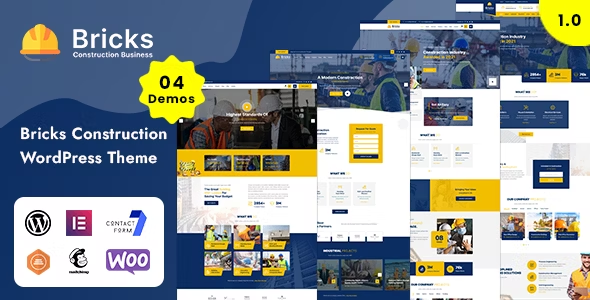
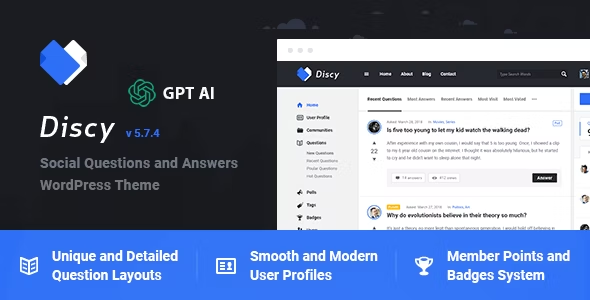
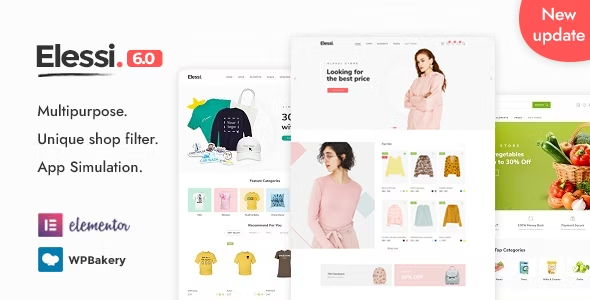
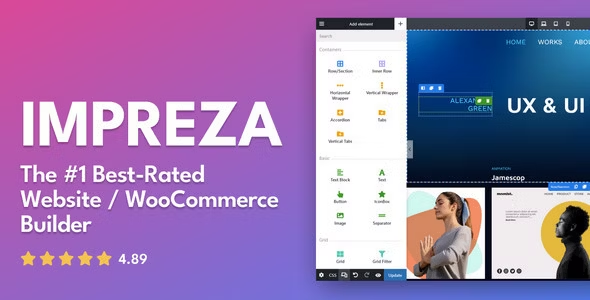



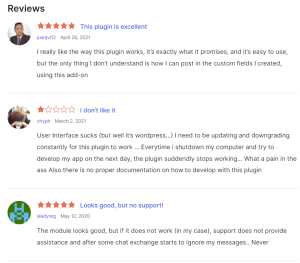


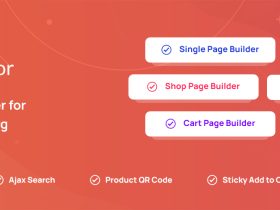
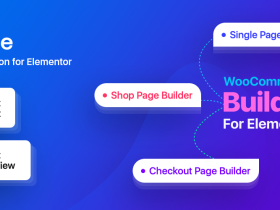
发表评论